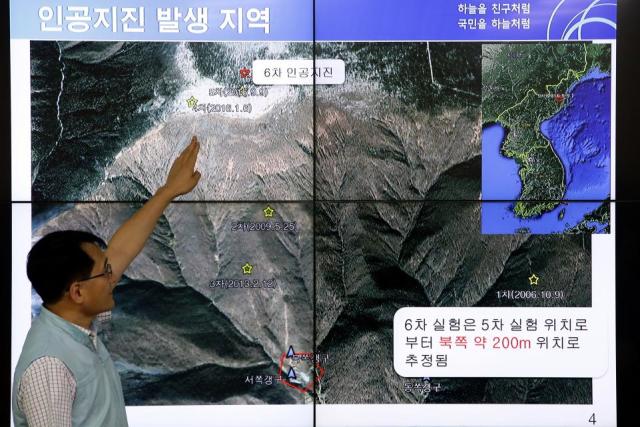The dismantling of the nuclear test site in North Korea is not a significant measure because it is easily reversible. The Kim regime at a time of their choosing can easily go and drill more shafts into another mountain if they want to do more nuclear testing. This is just another example of how the Kim regime tries to give up little to nothing in return for aid and the dropping of sanctions:
North Korea on Sunday stressed the importance of its dismantling the Punggye-ri nuclear test site this week and called it a “significant measure” amid reports the North has disregarded South Korea’s roster of journalists planning to cover the dismantlement.
The decommissioning of the site is “a very meaningful and significant measure” undertaken voluntarily by the North to achieve the denuclearization of the Korean Peninsula based on the spirit of an agreement reached at a historic inter-Korean summit, North Korea’s propaganda website DPRK Today said.
DPRK stands for the Democratic People’s Republic of Korea, the North’s official name. The leaders of the two Koreas met on April 27 at the truce village of Panmujom on the inter-Korean border.
DPRK Today referred to the May 12 announcement by the North’s foreign ministry that it will hold a ceremony for the dismantling of the nuclear test site between Wednesday and Friday and invite journalists from China, Russia, the United States, Britain and the South to cover it.
On Saturday, another North Korean propaganda website, Uriminzokkiri, carried a commentary in which the North said it does not give the slightest consideration to “a mental patient’s grumble” in the South. “The international community as well as the United States and South Korea is giving a great deal of support to the dismantlement,” it said.
In the commentaries carried by the two propaganda websites, the North lambasted conservative forces in the South, including the main opposition Liberty Korea Party, for underestimating the planned closure of the site. Pyongyang apparently aims to stress the importance of the dismantlement by raising the issue again.
South Korea’s unification ministry handling inter-Korean affairs said Friday the North had not responded to the list of South Korean journalists chosen to attend the ceremony. [Yonhap]
You can read more at the link.







